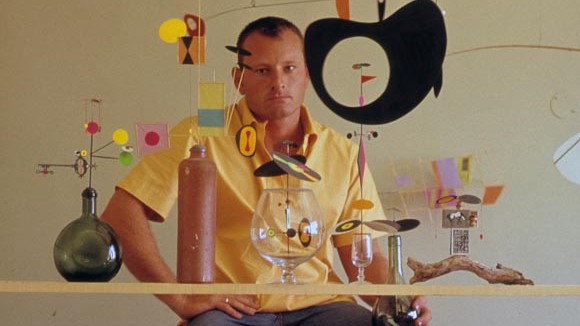

Book Review: “It’s Kind of a Cute Story”

I’ve been remiss in not writing about one of my favorite animation-related books of recent times, It’s Kind of a Cute Story, the memoir of Disney Imagineer Rolly Crump written in collaboration with historian Jeff Heimbuch.The 192-page book does a fantastic job of capturing Crump’s colorful spirit and enthusiastic personality on the printed page. It’s a short read, but the combination of quirky stories and rare photos makes it fun to pick up and browse through over and over.
Crump began his career in 1952 like many artists at Disney did—in the lowly ranks of inbetweener. It’s a wonder he was hired in the first place. His only art education had been in high school, and he was later informed by the studio’s head of personnel that he had the worst portfolio of anyone who had ever applied for an animation job at the studio.
In his earliest days at the studio, he was paid so little that he had to work oddjobs on weekends, like making sewer manholes, just to earn enough for basic necessities. It also became clear early on that animation might not be the best creative outlet for Crump. His interests spread out in countless directions; among his artistic hobbies, he made Calder-esque hanging mobiles, painted funny pictures and sayings onto rocks, and created ‘doper’ posters.
Crump made an impression around the studio because of his eclectic and independent creative streak. In 1959, when Walt Disney was looking for artists to work on the Disneyland parks, Ward Kimball suggested Crump for the job. Crump became a key player in WED Enterprises, the division of the Disney Company that designed the parks. He made significant contributions to classic rides and shows at Disneyland including the Haunted Mansion, Enchanted Tiki Room and It’s a Small World. He concocted his own version of the Haunted Mansion, which he called the Museum of the Weird. Walt had considered including it as part of the Haunted Mansion, but his death put a halt to those plans.

At one point, Crump was the supervising art director at Disneyland where he was responsible for everything from designing trash cans to making sure the attractions were properly lit at night. The book is divided into short chapters, and Crump’s enthusiasm for even the slightest minutia of Disneyland manages to keep the reader’s interest throughout.
Crump left Disney after supervising the Fantasyland dark rides for Disney World in Orlando. He felt that the Orlando park, made after Walt’s death, was a lesser version of Disneyland, and in his own words, was no longer happy working at the company. Numerous chapters follow about Crump’s non-Disney work in the Seventies and Eighties, and this second career is oddly compelling even if the attractions aren’t as familiar as his work at Disney. These projects included working on a circus-themed park called Circus World, designing the Knott’s Bear-y Tales ride at Knott’s Berry Farm, and working on projects with an unlikely assortment of people that included casino magnate Steve Wynn, marine explorer Jacques Cousteau and the Sultan of Oman.

It’s hard to imagine a free-spirited artist like Rolly Crump finding a home at the Disney Company today. He is acutely aware of his own good fortune, and gives much of the credit for his success to Walt Disney himself. Once, when he admitted to Walt that he had gone too far on a project, Disney replied, “Rolly, you go as far out as you want. I’m the one who will bring you back.” Fittingly, Crump devotes one of the book’s final chapters to his relationship with Walt Disney. His views on Walt are as sincere and heartfelt as any I’ve read. In addition to being a solid memoir of a Disney artist, the book serves as a celebration of the creative environment that Walt Disney created at his company.
It’s Kind of a Cute Story is available in paperback for $20.60 on Amazon.
